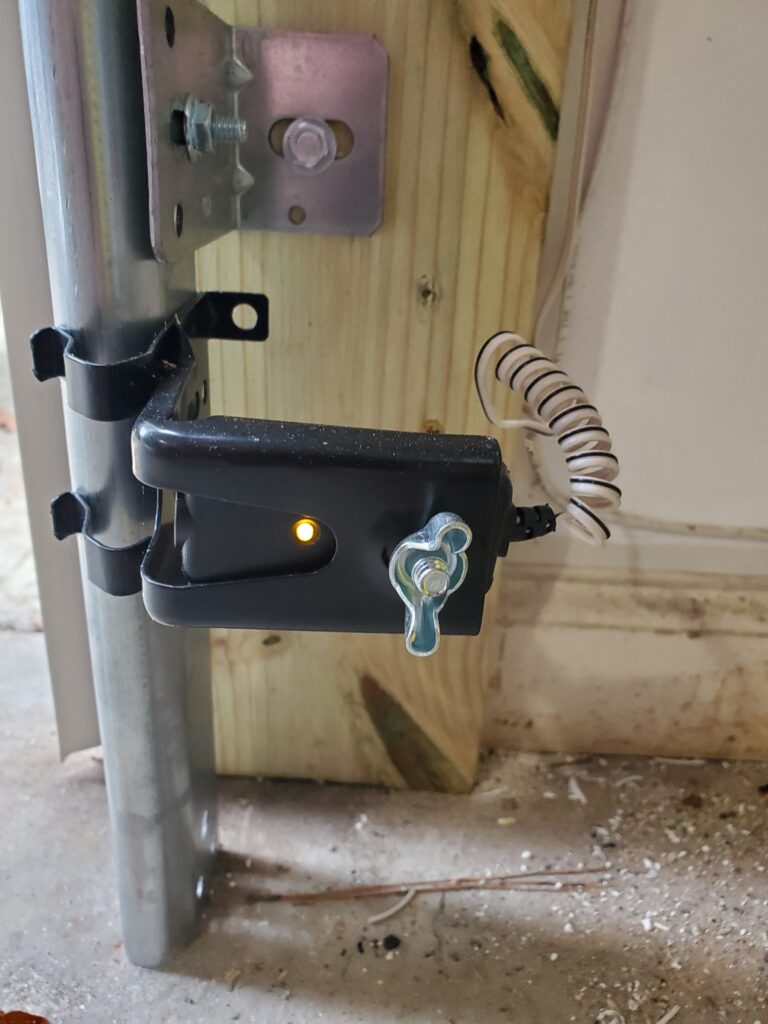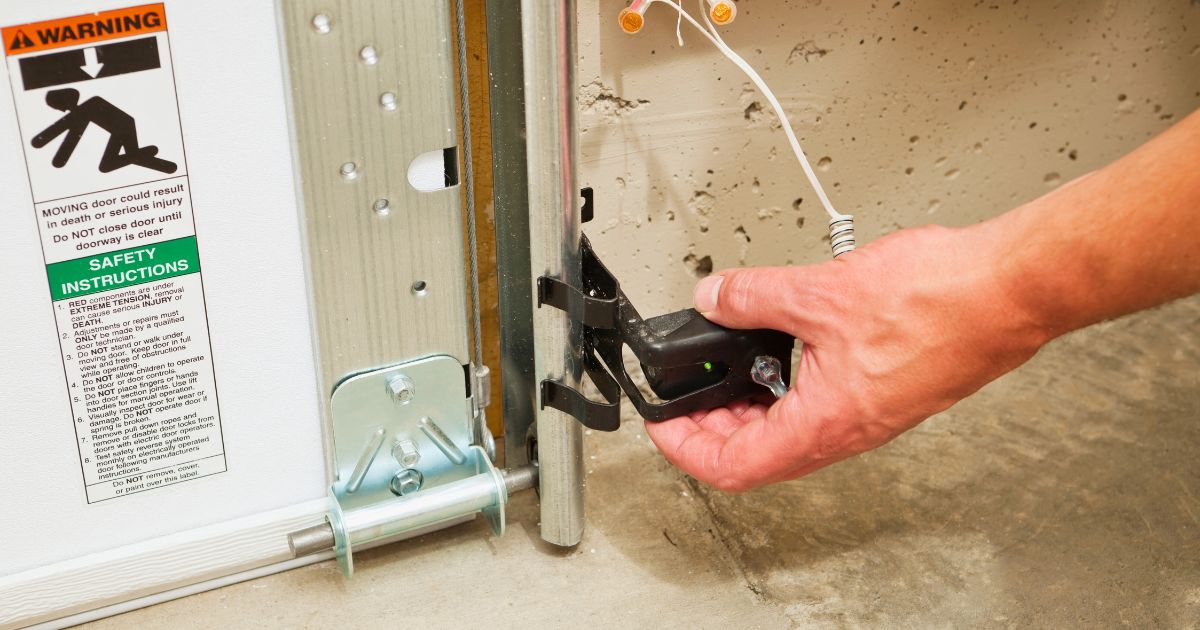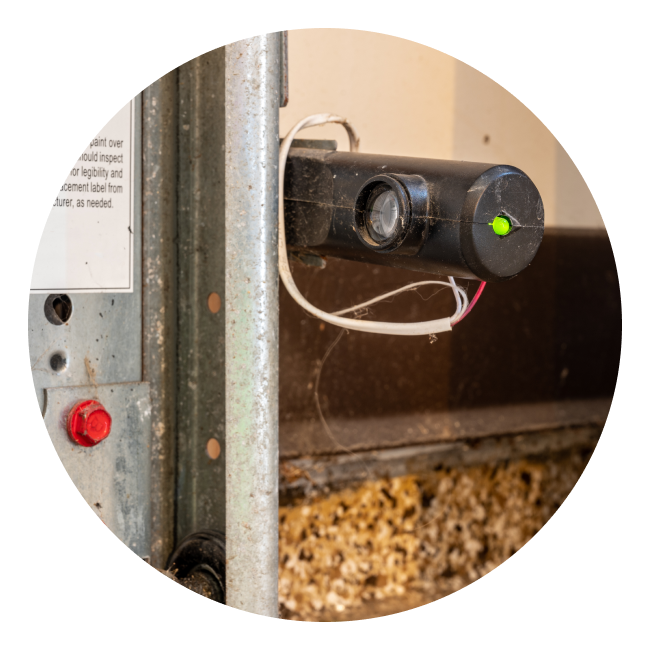As a seasoned garage door technician, I've encountered my fair share of sensor problems over the years. One particularly memorable case involved a frantic homeowner who called me late one evening, convinced his garage was haunted. The culprit? A persistently blinking yellow sensor light that was casting eerie shadows across his garage. While not supernatural, garage door sensor issues can certainly feel like a nightmare when they prevent you from accessing your home. Let's shed some light on these pesky yellow and green sensor problems and how to resolve them.
Understanding Garage Door Sensors
Before we dive into troubleshooting, it's crucial to understand the role these sensors play in your garage door system. Garage door sensors are safety devices designed to prevent the door from closing on objects, pets, or people. They use an infrared beam that runs across the garage door opening. When this beam is interrupted, it signals the door to stop closing and reverse direction.
Typically, garage door sensors have two lights:
- Green Light: Indicates that the sensor is powered and functioning correctly.
- Yellow Light: Often signals a problem with the system, such as misalignment or obstruction.

Common Causes of Yellow and Green Sensor Issues
Misalignment of Sensors
One of the most frequent causes of sensor problems is misalignment. If the sensors are not pointing directly at each other, the infrared beam can be disrupted, causing the yellow light to flash or remain steady. This issue often occurs after accidental bumps or shifts in the garage structure.
Dirty or Obstructed Sensor Lenses
Accumulation of dirt, dust, cobwebs, or small objects on the sensor lenses can block the infrared beam, triggering the yellow light. I once encountered a case where a determined spider had built an intricate web across both sensors, causing persistent issues for the homeowner.
Wiring Problems
Frayed, damaged, or loose wiring connections can affect the sensor's power supply and communication, leading to malfunctions and yellow light signals. This is particularly common in older installations or garages exposed to extreme temperature fluctuations.
Obstruction of the Infrared Beam
Any object in the path of the infrared beam can prevent the sensors from communicating properly, causing the yellow light to appear. I've seen everything from stray basketballs to curious cats trigger this issue.
Sensor Configuration Issues
In some cases, both sensors may show green lights or inconsistent colors, indicating a misconfiguration or malfunction in the system. This can be particularly confusing for homeowners and often requires a more thorough investigation.
Troubleshooting Steps for Garage Door Sensor Issues
When faced with yellow and green sensor problems, follow these steps to diagnose and potentially resolve the issue:
Check for Obstructions and Alignment
Begin by ensuring there are no objects obstructing the sensor beams. Clear the garage area of any clutter that might be blocking the sensors. Next, verify that the sensors are properly aligned. If they appear misaligned, adjust them so that they face each other directly. You may need to loosen the screws holding the sensors, adjust their position, and then retighten the screws once they are aligned correctly.

Clean the Sensors
Use a soft, clean cloth to gently wipe the sensor lenses. Remove any dirt, dust, or cobwebs that may have accumulated. For stubborn grime, you can use a mild cleaner, but be sure to avoid harsh chemicals that could damage the sensors.
Inspect and Fix Wiring Issues
Carefully examine the wiring connected to the sensors. Look for any signs of damage, such as frayed or exposed wires. Ensure all connections are secure and properly insulated. If you notice any issues, you may need to repair or replace the wiring.
Test the Sensors
After cleaning and adjusting the sensors, test their functionality. The green light on the receiving sensor should be steady when everything is working correctly. If the green light is not on or is blinking, it may indicate a persistent problem with alignment or wiring.
Check Power Supply and Electrical Issues
Verify that the main power source for the garage door opener is functioning correctly. Look for any signs of electrical problems, such as short circuits or water damage, that could be affecting the sensors.
Environmental Factors Affecting Sensor Performance
It's important to note that various environmental factors can impact the performance of garage door sensors:
Temperature Fluctuations
Extreme temperatures, both hot and cold, can affect the electronic components of the sensors. In very cold conditions, sensors may become less responsive, while excessive heat can cause overheating or malfunction.
Humidity and Moisture
High humidity, particularly in coastal areas, can lead to condensation inside the sensor housing. This moisture can cause short circuits or corrosion of the electronic components.
Sunlight and UV Exposure
Direct sunlight, especially during summer months, can interfere with the infrared sensors. Prolonged UV exposure can also degrade the plastic components of the sensors, making them more susceptible to damage.
Wind and Dust
Windy conditions can blow dust and debris onto the sensor lenses, potentially obstructing the infrared beam. Regular cleaning becomes even more critical in dusty environments.
Maintaining Garage Door Sensors to Prevent Future Issues
To minimize the likelihood of future sensor problems, consider implementing these maintenance practices:
Regular Cleaning
Make it a habit to clean the sensor lenses periodically, removing any accumulated dirt or debris. A quick wipe-down every few weeks can prevent many common issues.
Alignment Checks
Periodically inspect the sensor alignment to ensure they remain properly positioned. This is especially important after any impacts or vibrations that could knock them out of place.
Wiring Inspection
Regularly check the sensor wiring for any signs of wear, damage, or corrosion. Ensure all connections remain secure and properly insulated.
Professional Check-ups
Consider scheduling professional maintenance once or twice a year to have the entire garage door system, including the sensors, inspected and serviced by an expert.

When to Call a Professional
While many garage door sensor issues can be resolved through DIY troubleshooting, there are times when it's best to call in a professional:
Complex Issues
If you've attempted the basic troubleshooting steps and the problem persists, it may indicate a more complex issue that requires professional expertise.
Safety Concerns
For any repairs that involve working with the garage door's mechanical components or electrical system, it's safer to rely on a trained technician.
Lack of Proper Tools or Knowledge
If you don't have the necessary tools or feel uncomfortable performing the repairs yourself, it's best to seek professional help.
Time Constraints
Professional repairs often ensure long-term durability and can be more time-efficient than extensive DIY attempts.
In conclusion, yellow and green garage door sensor issues, while frustrating, are often resolvable with some basic troubleshooting. By understanding the common causes and following the steps outlined above, you can often restore your garage door to proper working order. Remember, regular maintenance is key to preventing these issues in the first place. And when in doubt, don't hesitate to call a professional – it's always better to be safe than sorry when it comes to the largest moving part of your home. With a little attention and care, you can ensure your garage door sensors continue to provide safety and convenience for years to come.

